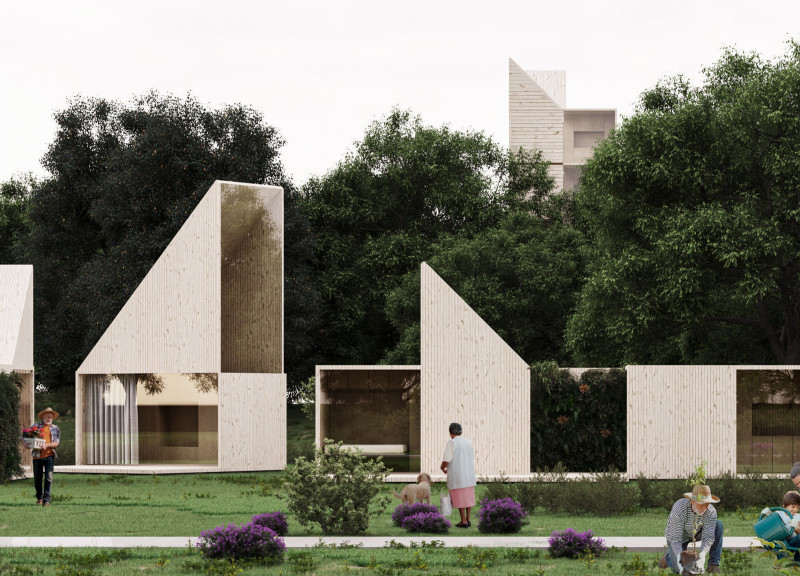5 key facts about this project
Modular Housing Design Approach
A central feature of the ADAPT project is its modular design. This approach allows individual housing units to be easily constructed, deconstructed, and reconfigured based on the changing needs of residents. The design encompasses a range of dwelling types, from micro-homes for solo inhabitants to larger family units and social housing apartments that can support a larger number of residents. This diversity in housing options enables the project to cater to various family structures and demographic changes, providing a versatile solution to contemporary urban living.
The project incorporates a variety of sustainable materials, including wood, concrete, zinc, fiber cement, and green roofs. These materials not only ensure the longevity of the structures but also reduce their environmental impact. The use of renewable resources contributes to energy efficiency, while features such as solar panels and compost landscaping promote self-sufficiency.
Community-Centric Spatial Organization
The spatial organization within the ADAPT project emphasizes the importance of community. Private living quarters are carefully balanced with communal areas, including kitchens and social spaces designed for resident interaction. The layout encourages social connections while maintaining individual privacy, addressing the dual needs for personal space and community engagement.
This project fosters a sense of belonging through its design, creating spaces that encourage residents to come together, share experiences, and build relationships. The architectural layout is functional, reflecting an understanding of both social dynamics and individual needs.
For additional insights into the design and functionality of the ADAPT project, consider exploring the architectural plans, sections, and designs that illustrate its modular structure and community-oriented approach. Detailed examination of these elements reveals the thoughtful architectural ideas that underpin this innovative housing solution.























